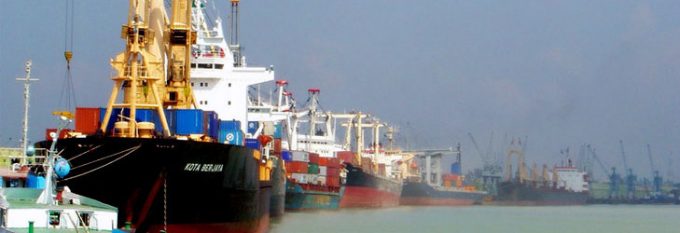Bottlenecks and price hikes as airlines now avoid Iran airspace
Asia-to-Europe airfreight could face extreme bottlenecks and price hikes due to the rising tension in ...

There may be a gleam of light in the tunnel for shippers exhausted by years of chronic congestion at Bangladesh’s major container gateway of Chittagong if the country goes ahead with plans to build a new deepwater facility to service its garment exports.
The Asian Development Bank (ADB) has set aside some $1.9bn for a project that could hugely increase Bangladesh’s container handling capacity and bring much needed relief to major retailers struggling to control mounting supply chain costs.
A senior supply chain manager at one of the UK’s largest high street clothing retailers has repeatedly told The Loadstar that congestion at both Chittagong and Dhaka airport remained one of the biggest challenges for its global supply chain.
“Chittagong continues to be the highest-risk port we use,” he said this week, “And it is by far our largest single port by volume, so any performance issues can have a significant impact on our speed to market.”
He added that port congestion, delays in berthing feeders, delays in working feeders and feeders being forced to leave berth before loading planned export containers were “commonplace”.
These delays have magnified the effect on containerised apparel supply chain, he further explained.
“Containers left on quay or feeders departing several days late will generally result in missed deepsea connections in Colombo or South-east Asian hubs, and [another] seven-day delay will usually ensue.”
Projects to radically expand Bangladesh port capacity have been mooted for up to two decades, but few have managed to get beyond the drawing board, as each has become successively mired in dispute, corruption and political impasse, and left Chittagong, a port which handles around 2m teu a year, operating far above its designed capacity.
“Current port capacity continues to lag well behind the demand curve driven by strong growth on imports and exports through Chittagong, and throughput growth has exceeded its five-year plan,” our source said.
However, the Bangladeshi government has now contracted a consortium comprising Hamburg Port Consulting, fellow German firm Sellhorn Engineering and local company KS Consultants to draw up a feasibility study for the creation of a new greenfield port called the Bay Terminal, on the Bangladeshi coast at Patenga.
This would offer considerably deeper water than the 8.5-9.5 metres available at Chittagong’s existing quays, which limits the port to only handling feeder vessels.
According to a spokesman for Hamburg port operator HHLA, the owner of HPC: “The feasibility study should be completed in the middle of 2017 and delivered to the government and port authority.
“If the decision process and construction phase move quickly forward, the terminal has a chance to be completed by 2021,” he added.
If so, this could ultimately take annual handling capacity in the country up to 6.1m teu by 2030, although port customers said that there would additionally be a need for investment in hinterland infrastructure, as well as other modes of transport.
“Dhaka inland container depot, which connects to Chittagong by rail, continues to be hugely under-invested, and this link is often hit by equipment failures and train and line failures,” said the Loadstar source.
“And the airport has been heavily impacted by security issues, which has forced some shippers to switch cargo to the sea/air mode, which adds additional volumes to Chittagong.”
Other causes of the ongoing congestion at Chittagong include the Ramadam/Eid period and the weeks either side, when “productivity dips significantly and unrelated strike action often clusters around this period”.
On any given day there are a number of containerships waiting to berth, according to the daily vessel list produced by Chittagong Port Authority. For example, on 2 November, there were 10 – either at berth or anchor – which had been waiting to begin cargo operations for anything between two days and a week.
At the recent TPM Asia event in Shenzhen, Tim Wickmann, chief executive of Maersk intra-Asia subsidiary MCC Transport, identified Chittagong as the worst-performing port in the carrier’s network.
“Bangladesh is the worst place for us,” he added. “The ports are swimming in containers and cargo is still coming in. It’s impossible to get a berth – the wait is three-to-six days.”
Comment on this article